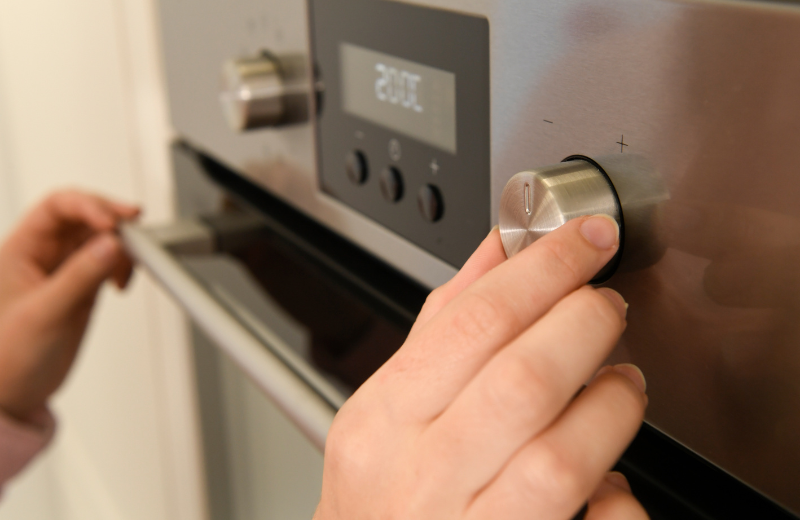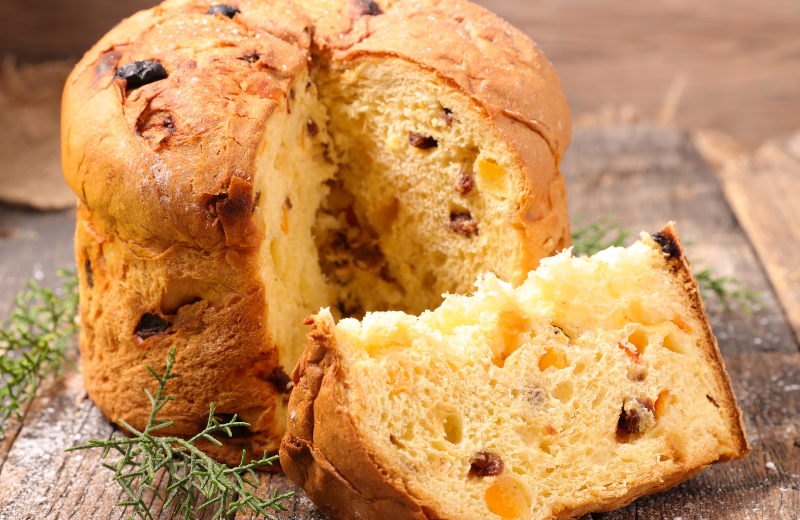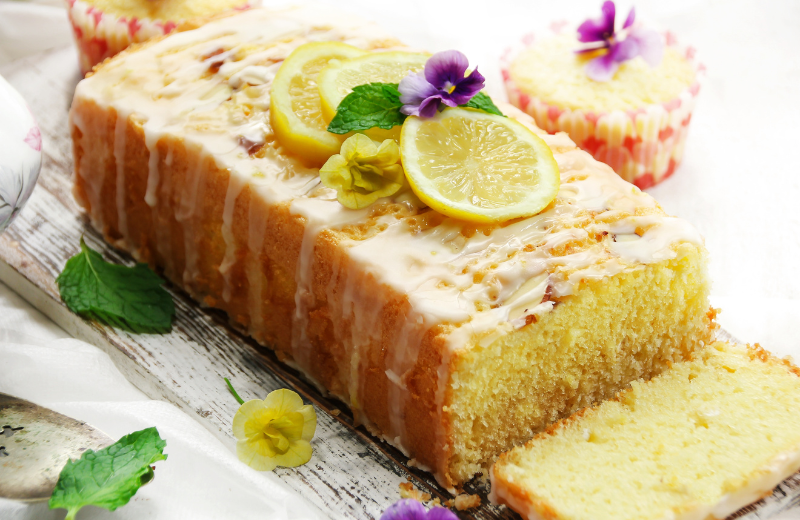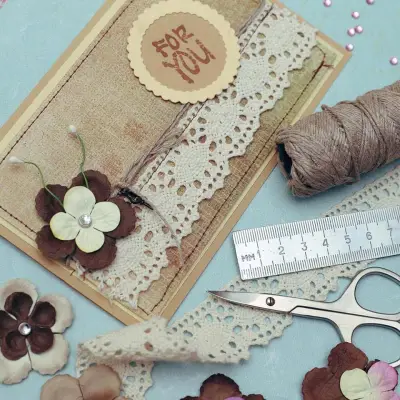There’s nothing quite like the anticipation of cutting into a freshly baked cake, only to find that it’s dry, maybe even a bit crumbly, and not the soft, tender sponge you were hoping for. Whether you’re baking for a celebration or simply enjoying a quiet afternoon treat, a dry cake can be deeply disappointing, especially after putting in time and effort.
So, why is your cake dry and crumbly? And more importantly, how can you fix it, or prevent it from happening again? Whether you’re a beginner baker or someone looking to polish their cake-making skills, this guide walks you through the reasons behind dry cakes, and how to make a cake really moist and soft every time.
Jump to:
Recommended for you!
Best SellersWhat Makes a Cake Moist?

What makes cake moist comes down to a balance of ingredients, method, and storage. If one of those elements is off, you might end up with a cake that’s dry, crumbly, or simply not as satisfying as it should be. Some of the most common reasons why your cake is dry include:
- Too much flour
- Too little fat or sugar
- Overbaking
- Incorrect oven temperature
- Not enough liquid or eggs
- Overmixing the batter
Let’s take a closer look at each one.
1. Too Much Flour
Flour is essential for giving your cake structure, but it’s easy to go overboard without realising. Adding too much flour is one of the quickest ways to end up with a dense, dry cake. This often happens when flour is measured incorrectly, such as by scooping it directly from the bag, which compacts it and results in using more than intended. If you've ever wondered why your cakes turn out dry even after following the recipe, inaccurate measuring could be the culprit.
How to Fix it: Always measure flour carefully. Use the spoon-and-level method; gently spoon the flour into your measuring cup and level it off with a flat knife. This prevents packing too much flour into the mix. For the most accuracy, invest in a kitchen scale and weigh your ingredients.
2. Not Enough Fat or Sugar
Fat and sugar play an important role in keeping your cake moist and tender. Fat, whether it’s butter, oil, or another alternative, coats the flour and helps lock in moisture. Sugar doesn’t just sweeten; it also attracts and holds onto water during baking. If you’ve reduced fat or sugar to make your cake healthier, you might have unintentionally caused that dreaded dry, crumbly texture.
How to Fix it: Consider adding a little more fat to moisten your cake. A tablespoon of oil or melted butter can make a noticeable difference. You can also incorporate moisture-boosting ingredients like yoghurt, sour cream, or applesauce. These additions will enhance softness without making the cake greasy.
3. Overbaking – A Common Culprit
Overbaking is often the cause of a cake coming out dry. Even if your oven timer says it’s not done yet, cakes can bake faster depending on your oven, the type of tin, or even the weather. Once a cake is in the oven too long, the heat drives out moisture, leaving you with a sponge that's dry and crumbly instead of soft and fluffy.
How to Fix it: Always start checking your cake 5–10 minutes before the suggested baking time ends. Use the toothpick test; when inserted into the centre, it should come out with a few moist crumbs, not completely clean. If you're unsure, it’s better to slightly underbake and let residual heat finish the job outside the oven.
4. Oven Temperature Troubles
Even if you follow your recipe to the letter, an unreliable oven can ruin your efforts. Many home ovens run hotter or cooler than their settings suggest, which can result in uneven baking. A cake that bakes too quickly at a high temperature might look golden on the outside but be dry inside. A low temperature can cause a cake to dry out as it struggles to bake through.
How to Fix it: Use an oven thermometer to check your oven’s true temperature; they’re inexpensive and can transform your baking results. Adjust your dial accordingly if you notice discrepancies.
5. Not Enough Liquid or Eggs
Eggs and liquids like milk or buttermilk add essential moisture and contribute to a cake’s texture and stability. If your cake didn’t hold together, chances are your recipe lacked enough liquid or eggs. Skimping on these can lead to a dry, crumbly result.
How to Fix it: Double-check your recipe measurements and avoid reducing liquid or eggs unless you’re experienced in recipe adjustments. If you're experimenting, try adding an extra splash of milk or an additional egg yolk to boost moisture. This small change can make a noticeable difference in how to make a cake softer and more cohesive.
6. Overmixing the Batter
A smooth batter might look appealing, but mixing too much is a common mistake that leads to a tough, dry cake. Overmixing develops gluten, which is great for bread, but not for cakes where you want a tender crumb. If your cake is dry and not fluffy, overmixing could be part of the problem.
How to Fix it: Mix just until your ingredients are combined, no more. Once the flour disappears into the batter, stop. If you’re adding extras like fruit or chocolate chips, fold them in gently at the end. This will help you maintain a light texture and avoid ending up with a dry cake.
7. Storage Slip-Ups
You’ve baked the perfect cake — soft, moist, and delicious. But by the next day, it feels dry and stale. Poor storage is often the hidden reason why cakes dry out after baking. Exposure to air quickly pulls moisture from the sponge, leaving you disappointed when you return for a second slice.
How to Fix it: Knowing how to keep a cake moist after baking is just as important as baking it properly. Once your cake has cooled, wrap it tightly in cling film or place it in an airtight container. Avoid refrigerating unless absolutely necessary, as fridges tend to dry cakes out. If you need to store it longer, freezing is a great option; just wrap it well and defrost at room temperature to retain moisture.
Specific Dry Cake Woes

Let’s look at some common types of cake and why they might turn dry or crumbly.
Why is My Fruit Cake Dry and Crumbly?
Fruit cake often turns dry and crumbly due to overbaking or poorly prepared fruit. Its dense texture requires a slow bake, but leaving it in the oven too long can quickly strip away moisture. Another common reason is adding dried fruit without soaking it first. The fruit absorbs liquid from the batter as it bakes, drying out the cake.
To avoid this, always soak dried fruits in juice, tea, or alcohol before baking. After baking, wrap the cake well and brush it occasionally with syrup or alcohol to help it stay moist as it matures.
Why is My Chocolate Cake Dry?
If your chocolate cake is dry, cocoa powder is likely the cause. Cocoa is naturally absorbent and, without enough fat or liquid in the mix, it can leave your cake lacking moisture.
Switching from butter to oil can help, as oil creates a softer, moister crumb. You can also add a spoonful of sour cream, yoghurt, or mayonnaise to boost moisture and richness.
Why is My Sponge Cake Dry?
A sponge cake can easily become dry if it’s overbaked or if the mixing technique isn’t quite right. Since sponge relies on beaten eggs for its light texture, even a few extra minutes in the oven can dry it out.
To keep it soft, watch baking times carefully and avoid opening the oven door too often. Once baked, brushing the cooled sponge with a simple sugar syrup can add extra moisture and enhance flavour, helping you achieve that perfect light and fluffy result.
Why Did My Cake Dry Out in the Fridge?
It’s a common misconception that storing cake in the fridge will keep it fresher for longer. In reality, refrigeration often leads to a dry cake. The cool air inside a fridge draws moisture out of baked goods, leaving even the softest sponge feeling firm and stale within a day or two. This is especially noticeable with unfrosted cakes or those stored without proper covering.
To prevent your cake from drying out in the fridge, refrigerate it only if absolutely necessary, such as when it contains fresh cream or perishable fillings. Always wrap the cake tightly in cling film or place it in an airtight container to minimise exposure to cold air.
Why is My Cake Crumbling When I Frost It?
If your cake is crumbling as you try to frost it, it’s usually a sign that the sponge is too dry or that the cake hasn’t cooled properly. Attempting to spread frosting on a warm or delicate cake can cause pieces to tear away, making it difficult to achieve a smooth finish. Even a well-baked cake can shed crumbs if handled too roughly during decorating.
To avoid this, ensure your cake is completely cool before you start frosting. Applying a thin ‘crumb coat’ — a light layer of frosting that traps loose crumbs — can create a stable base for your final layer. If your cake feels particularly fragile, consider brushing it with a little syrup before frosting to add moisture and help hold everything together.
How to Moisten a Dry Cake After Baking

Already baked your cake and it’s drier than you’d like? Don’t worry, a dry cake doesn’t have to be a disaster. There are several easy ways to bring back moisture and improve both texture and taste. Here’s how to fix a dry, crumbly cake:
- Simple syrup: Mix equal parts sugar and water, heat until dissolved, and brush it generously over the surface of your cake. This quickly adds moisture and a subtle sweetness without altering the flavour too much.
- Frosting or glaze: A thick layer of buttercream, whipped cream, or a glossy glaze can work wonders by locking in moisture and disguising any dryness. It also adds richness, making each bite feel softer.
- Warm with custard or cream: Serving slices with custard, pouring cream, or a fruity compote can instantly soften the texture. This is a great option for cakes that are too dry to enjoy on their own.
- Use a flavoured soak: Instead of plain syrup, try soaking your cake with flavoured liquids like coffee, fruit juice, or a light liqueur. This enhances its flavour profile, making it taste intentional rather than rescued.
- Microwave with a damp paper towel: If you need a quick fix for individual slices, place a piece of cake on a plate, cover it with a damp (not wet) paper towel, and microwave for 10–15 seconds. The steam will soften the cake temporarily, perfect just before serving.
Recommended for you!
Best SellersHow to Make a Cake Super Moist Every Time
To make a cake really moist, it comes down to balance: the right ingredients, proper mixing, correct baking time, and smart storage. Once you understand these building blocks, you’ll have a much easier time baking cakes that are soft, flavourful, and never dry.
Don’t be disheartened if things go wrong once or twice. Every experienced baker has faced a dry sponge or crumbly disaster. The good news is that each time you bake, you learn a little more about how your ingredients and oven behave.
Study our Cake Baking and Decorating Diploma for £29
Once you understand what makes a cake moist, you’ll feel more confident tweaking recipes and spotting where things went wrong.
If you’re passionate about baking or want to develop your skills further, the Cake Baking and Decorating Diploma Course from Centre of Excellence is a fantastic next step. It’s designed to suit all levels – whether you’re just starting or looking to master advanced techniques. And right now, you can enrol for just £29.













